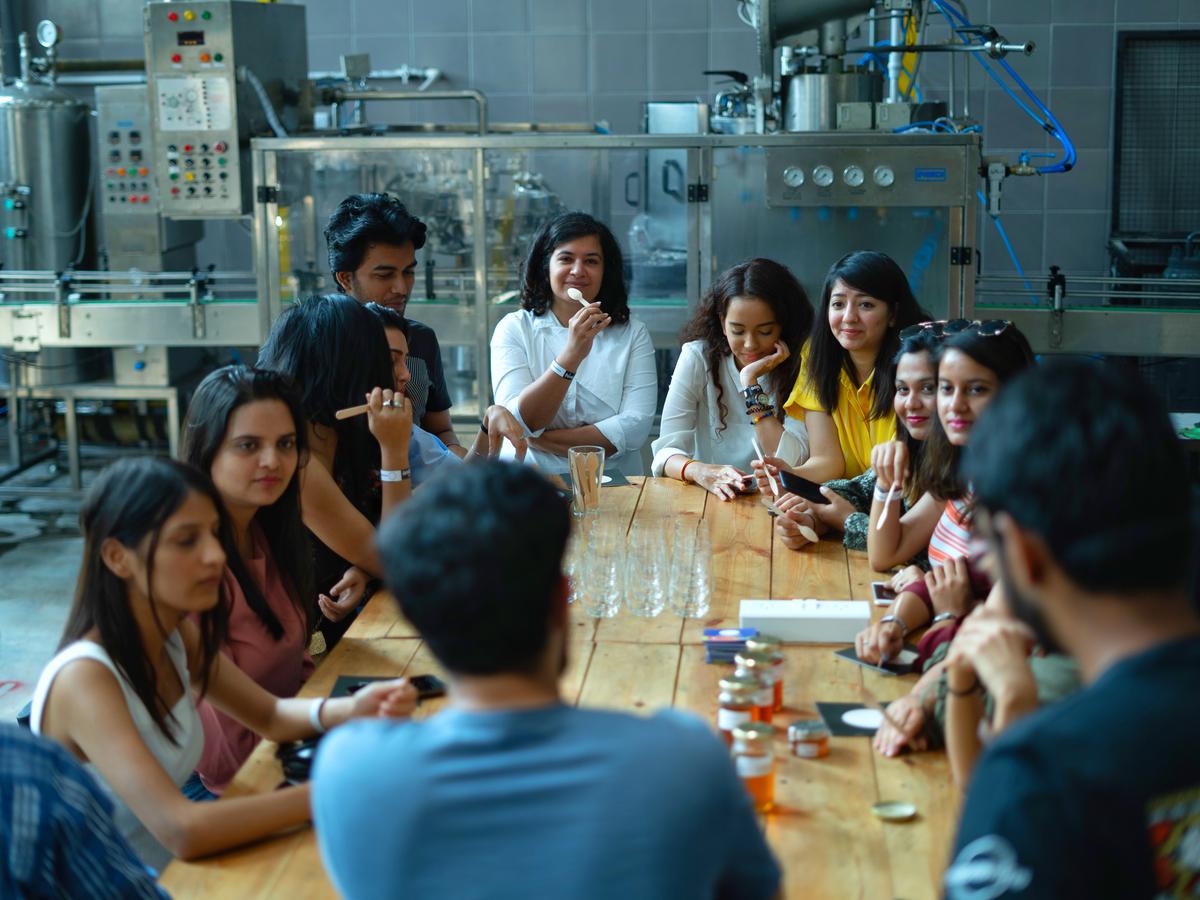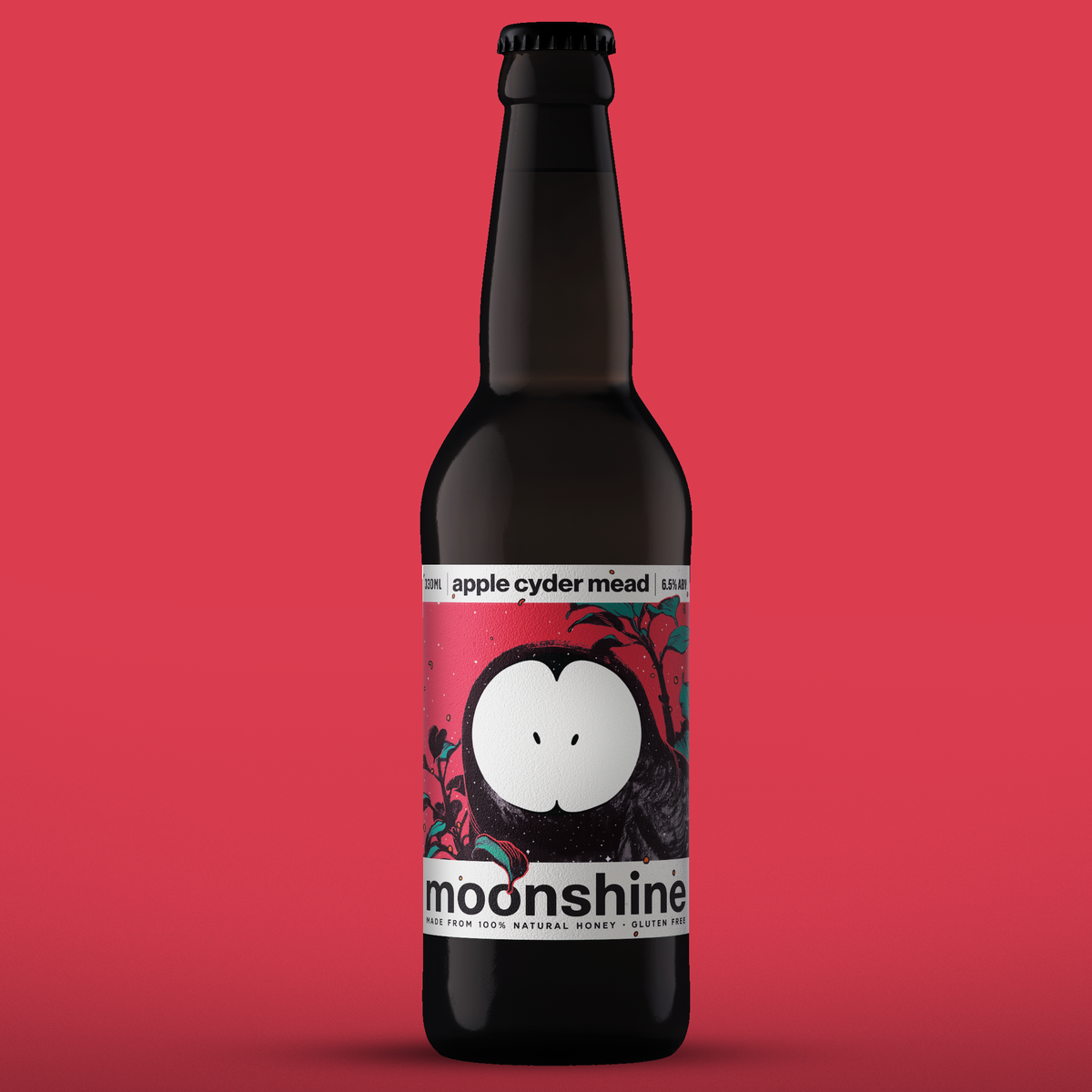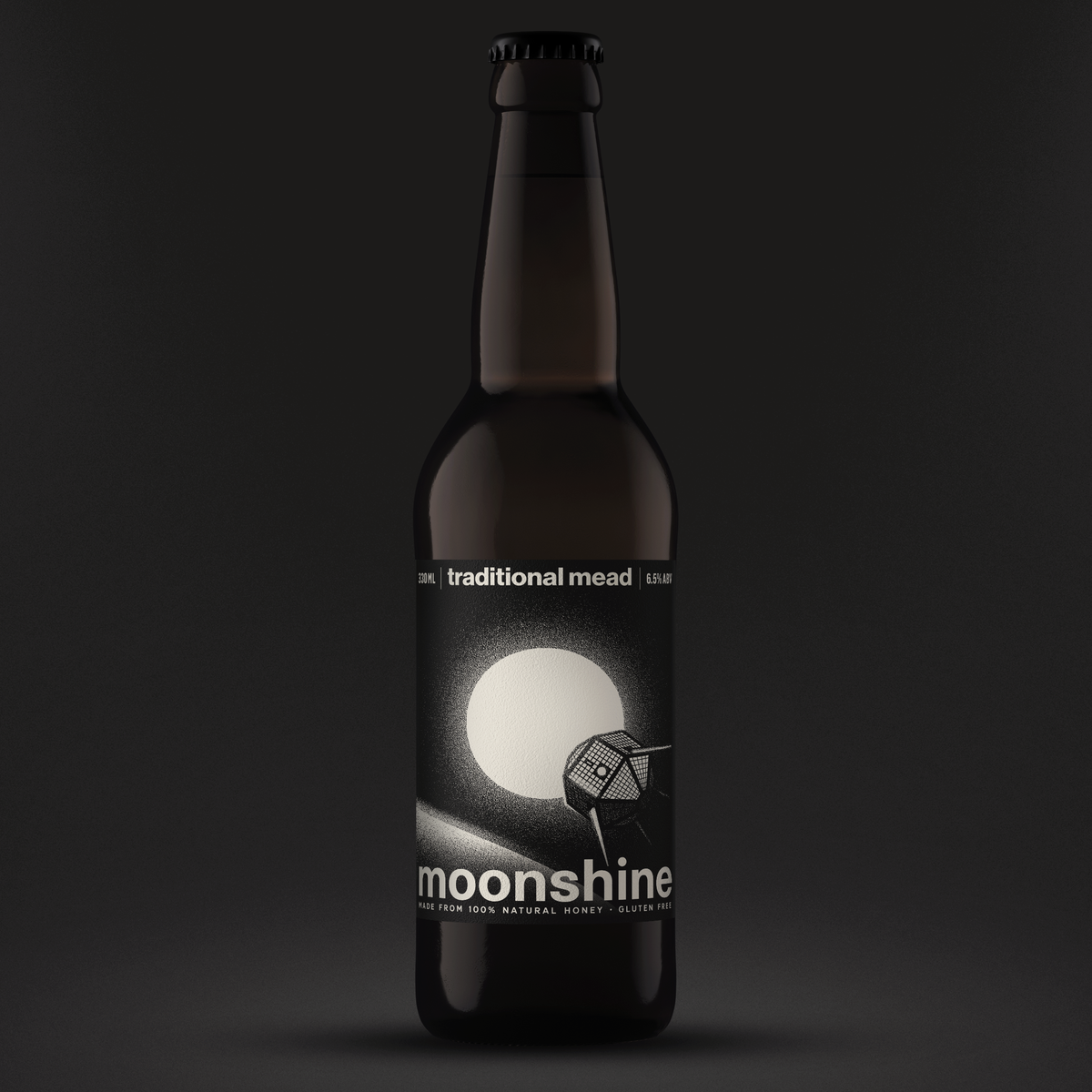The latest addition to Moonshine Meadery’s craft liquor catalogue is a fruity variant flavoured with hops and their in-house multiflora honey
The latest addition to Moonshine Meadery’s craft liquor catalogue is a fruity variant flavoured with hops and their in-house multiflora honey
Oops, they did it again. Maharashtra’s quirkily-named Moonshine Meadery has just announced the launch of another new variant — hopped mead — with the fruitiness of Citra, Mandarina, and Amarillo hops overlaid with the sweetness of their own multiflora honey. Of course, that could mean some current much-loved flavours might be phased out. But that is the way all genuine craft beverage manufacturers work — with seasonal and fresh produce.
In the four years since their launch, much has happened, including a pandemic. Having said that, for Moonshine Meadery, one of Asia’s largest meadery, the focus remains steady on building the category it created — the honey-based alcoholic beverage beloved of the Vikings and celebrated in old Indian texts — a drink, arguably the most ancient in the world, but lost to time. For co-founders Nitin Vishwas and Rohan Rehani, it was time to reintroduce it to modern India. “It wasn’t a cool, new business plan — just something that checked off multiple boxes personally,” admits Rehani, explaining that mead comes from the Welsh word meddyglyn, referencing the drink’s reputed ancient medicinal powers.
Cranking up
To start with, all they had was a 1,300 sq.ft. shed, two 1,000 litre tanks, two hand-cranked labelling machines and support from the local microbrewing community. “We wanted to adopt the ‘minimal viable product’ technique before setting up additional capacity,” admits Rehani. So, upscaling was a case of ‘shooting in the dark’ as they were completely unsure if their business would be viable. “We would buy equipment only if the production team complained two months in a row!” By the end of 2019, they had begun thinking more long-term — ironically just before Covid hit. “We went from boutique to slightly serious boutique,” jokes Rehani, “As our aspirations crystallised, we went through a tectonic shift in mindset. The market has proved us wrong. ” As the pandemic subsided they scaled up to 10 large tanks, a state-of-the-art centrifuge and automated bottling and labeling machines expanding operations to 25,000 square feet sq.ft. with space to grow further.
And thereby hangs a tale. Global data shows mead’s popularity on the uptick — a half-billion-dollar industry with an annual growth of 12%, something that would eventually reflect in Indian markets, believes Vishwas, quoting Bollywood. Sharabi (1984) depicted Amitabh Bachchan downing whisky, but in Dil Chahta Hai (2001), the young cast quaffed beer and wine reflecting the growing preference among youth for lower alcohol beverages.
Echoing world trends, younger (under 30) Moonshine drinkers have gravitated towards it attracted by its quirkiness and quality ingredients. “Initially we thought it might be someone well-travelled with a disposable income, but we were wrong,” admits Vishwas, “It’s both men and women, who are proud of their Indian identity and enjoy quality Indian drinks.”
Chasing bees
Moonshine’s mainstay is their honey, mead’s single most valuable ingredient and a major factor that has earned them a double-gold in international competitions. Carefully sourced by qualified beekeeper Rehani to supplement their own hives, Moonshine currently uses six tonnes a month, a big jump from the 500 kg they started with. “Experiments have shown us a marked difference in fermentation quality and flavours with pure honey,” he says.
Rehani can discuss honey for hours: our conversations cover its fermentation process, yeast, nutrients and chemical formulae to flavours of his favourite sidr honey, newly launched. “When I first tasted it, my jaw dropped. It was creamy, textured, with butterscotch flavours.”
Unlike the West, honey consumption is miniscule In India, and breakfasts are traditionally savoury. Consumption remains 2 grams per capita unlike the 2 kg per capita in the West and much of it is adulterated with sugar syrup or darkened by infusing tea leaves. Moonshine owns 300 beeboxes and has their own dedicated bee whisperer, Akshay, taking on hand-picked independent beekeepers only after stringent quality checks.
Beer vs. mead
The name Moonshine was a hat tip to prohibition referencing their own garagiste mead-making experiments. “It was a kind of inside joke,” says Rehani, recalling early days of attempting to hand-sell Moonshine at a high-end Mumbai supermarket, “The first batch at 12% ABV was both too potent and unbalanced. But several hundred trials later they had reduced the alcohol to 6.5%, found balance with the natural flavours and finally created a product worth selling.
In December 2020, when Moonshine began selling honey through its Honey Project, the exercise was to shine the spotlight on honey which had received a bad rap after media disclosures of large-scale honey adulteration by major corporations. “We know India has fantastic honey like the sidr used for our Project X Mead. With such great quality here, we want to sell it for itself, not convert it all into mead which honestly would be easier. Honey is not a money-making enterprise for us: we want people to know that honey is awesome, not something you take for a sore throat.” Moonshine believes that they can grow the category and thereby aid market growth. “We know now honey has provenance and that terroir counts. That’s the message we want to share.”

A tasting session
Besides, the value addition is tremendous, adds Vishwas. “As beekeepers we’re in a unique position of adding to the bee population which spells health for the earth at large.”
Flavour first
The exciting fact about mead is that it is a blank canvas, able to carry any flavour — sweet, spicy, savoury or bitter, or, as Vishwas puts it, “think of a fruit and we can turn it into mead.” Yet, they are reluctant to repeat flavours. “Experimentation is in our DNA,”says Rehani. So much so that each new employee at Moonshine creates a unique flavour as a kind of rite of passage. While some do not work, others do, like their popular guava chili version conceptualised by an intern. “Most important: it must be tasty. Only then can the consumer buy into its other pluses — the gluten-free factor or the natural ingredients.”
Keeping diverse Indian palates in mind, their roll-call of four to five changing flavours are focused on specific markets. Kokum, familiar in Maharashtra and Goa is launched there, while guava chili and apple work everywhere. New experiments for their steadily expanding ‘flavour Bible’ include wasabi and soy, and curry leaf mead.

A mead from their collection
If offered big bucks would they sell their brand? I asked jokingly. “I’ll take the money but the backbone of our brand will remain authenticity — I won’t kill that,” says Rehani seriously, “Perhaps one day we might use a fruit press instead of cutting 200 kg of guava by hand. But that’s it. Scale doesn’t mean abandoning brand core values.” Adds Vishwas, “We are craft and will stay that way.”
Moonshine is available in eight markets pan-India including Maharashtra, Goa, Karnataka, Assam, Himachal Pradesh, Rajasthan and UP.


























